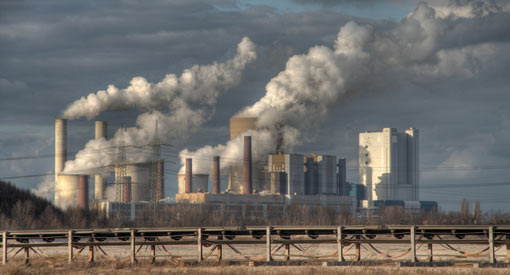
CO2 produced from large, stationary sources such as power plants contribute a large percentage of anthropogenic CO2 emissions (1). Nearly all solutions for post-combustion carbon capture revolve around absorption, adsorption, and membrane separation processes. Briefly, absorption separation operates by selectively solubilizing CO2 into a liquid-phase solvent or solution. The liquid can then be heated to release a concentrated CO2 stream. Adsorption functions much in the same manner, except that a solid sorbent is used to physical or chemical adsorb CO2. CO2 can be from the solid either by lowering the pressure or increasing the temperature. Membrane separation differs from absorption and adsorption, as it uses a selectively permeable membrane to separate a mixed gas stream. Since different gases pass through the membrane at different rates, a CO2 selective membrane will produce a CO2-rich stream on the downstream side of the membrane while leaving a CO2-lean stream on the upstream side. Transport through the membrane is proportional to differential partial pressure of CO2 across the membrane. The most mature technology for CO2 separations is absorption with an aqueous solution of monoethanolamine (MEA). However, the costs for this separation are high, primarily due to the energy costs associated with heating up the solution for regeneration. Large amounts of solvent would also be needed due to the limited loading of the corrosive MEA solution and the stoichiometric relationship between CO2 uptake and MEA loading. Adsorption separations face similar challenges in regeneration costs, while membrane separations suffer greatly from the low CO2 concentration in flue gas, limiting the partial pressure driving force and separation performance. Lowering regeneration costs and increasing the volumetric CO2 capacity would make implementation of carbon capture and sequestration more tenable for potential economic or legislative initiatives.
Metal-organic frameworks (MOFs) show promise as an advanced CO2 sorbent for carbon capture. Pioneered by the Yaghi group (2), MOFs consist of organic ligand molecules that bind multiple metal ions. In turn, each metal ion can support multiple bonds, thus forming an extended porous network or framework. A nearly infinite number of MOFs can be theoretically synthesized from different metal ions and different linkers, but the best MOFs possess extraordinary surface areas, highly regular crystalline pore structures, and tunable surface chemistries. Furthermore, many MOFs can be made in mild conditions with inexpensive starting materials, making the feasibility of scale-up a reasonable endeavor. Here, we describe two recent developments in MOF technology: the highest surface area MOFs, MOF-210, and an amine-funtionalized MOF with one of the highest heat of adsorption and selectivity, mmen-CuBTTri. We then hypothesize on the feasibility of carbon capture using these MOFS by designing and costing a full-scale separation setup utilizing theoretical adsorbents with comparable properties. We conclude with some perspectives on the feasibility of adsorption for CO2 capture and remarks on the economic and political landscape for implementation of carbon capture and sequestration (CCS).